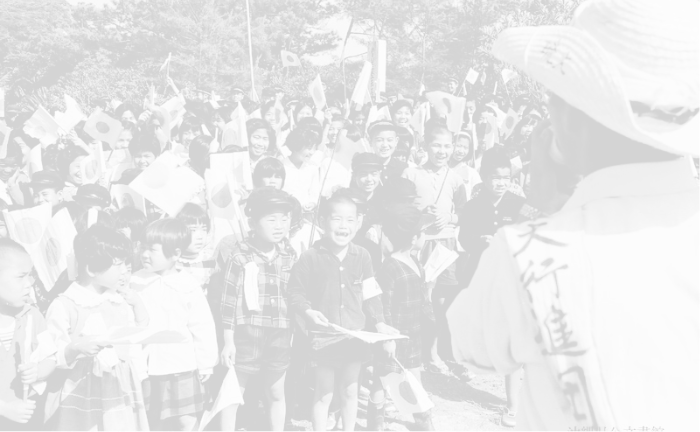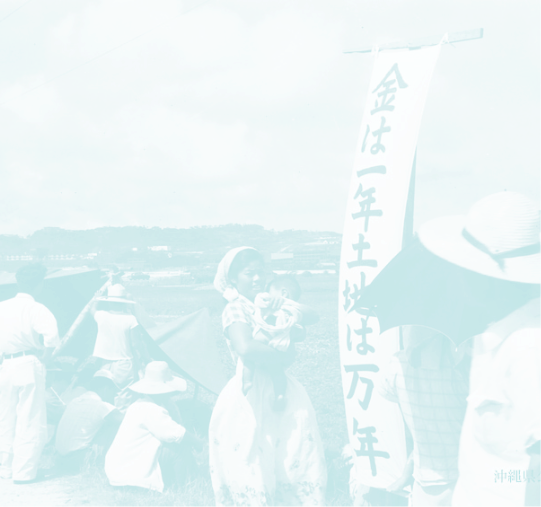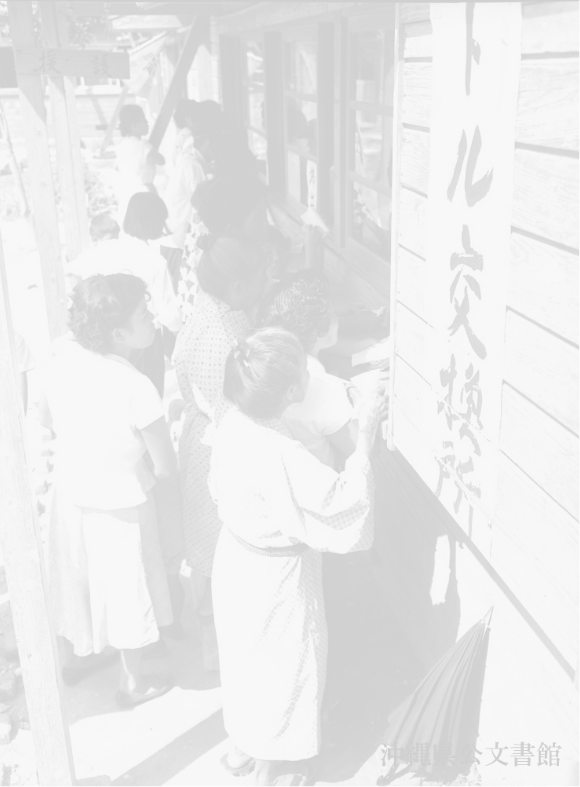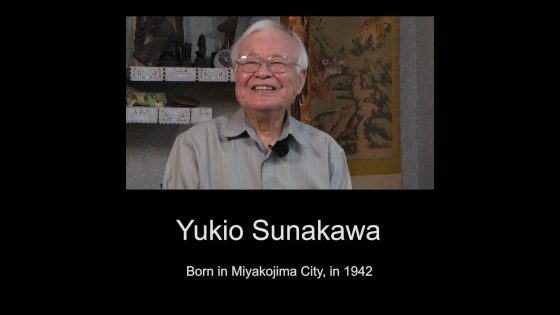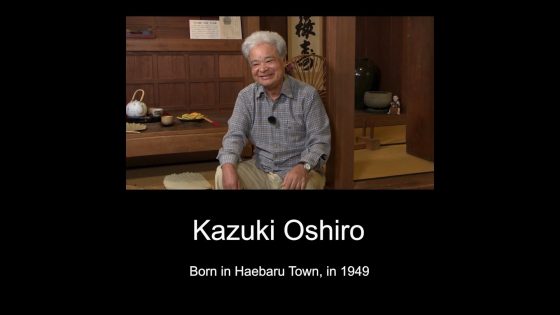
Across the 27th Parallel North
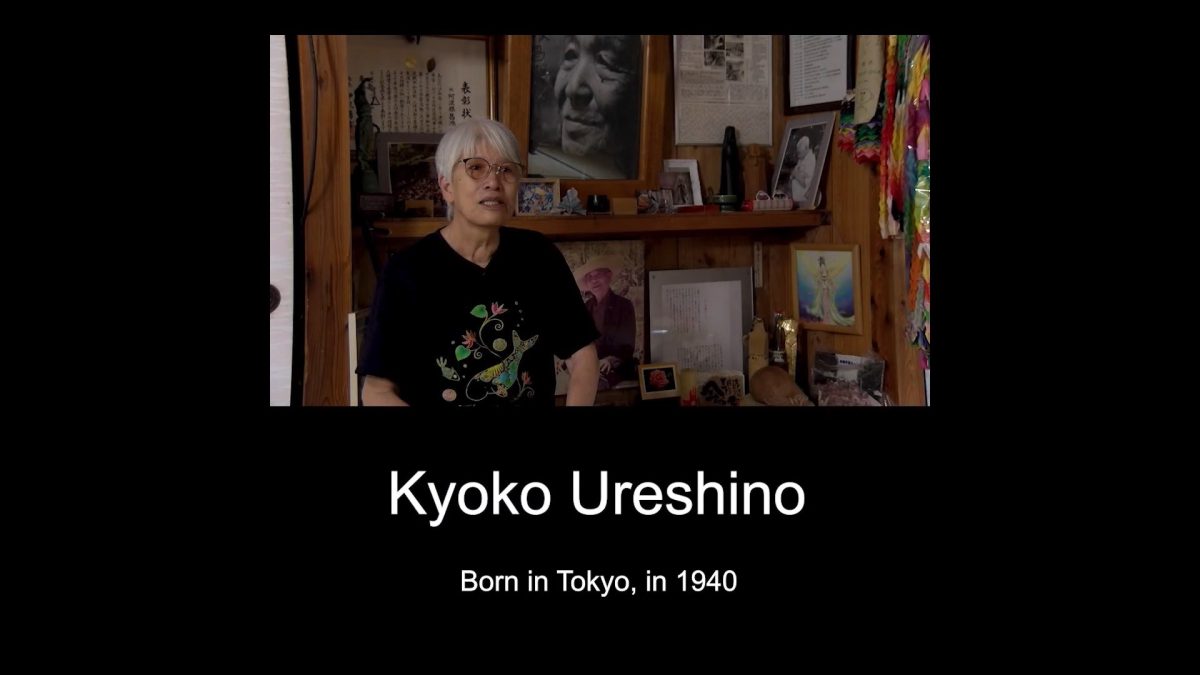

- Born in 1940
- Kyoko Ureshino
Timeline
| 1940 |
Born in Kamata, Tokyo.
|
|
|---|---|---|
| 1959 |
Studied at the night school of the Kuwasawa Design School.
|
|
| 1960 |
As part of her design school studies, she participated daily in the siege of National Diet Building, a campaign against the Japan-U.S. Security Treaty.
|
|
| 1962 |
Graduated from the night school of Kuwasawa Design School and became a freelance news photographer.
|
|
| 1963 |
Accompanied the group returning to Tokyo from Kagoshima after the first maritime rally demanding the return of Okinawa to Japan, and conducted interviews on the way between Ohigawa and Tokyo.
|
|
| 1964 |
Participated in the march (Tokyo to Yoron) demanding the return of Okinawa to Japan. Also covered the maritime rally held at the 27th parallel north.
|
|
| 1965 |
Participated in "the first Homeland Reversion March" organized by the Homeland Reversion Council in Okinawa. Along the way, captured on camera an incident in which a young girl was run over and killed by U.S. forces in Kanna, Ginoza Village.
|
|
| 1967 |
In December, while covering the groundbreaking ceremony for a Danketsu Dojo on Ie Island, she was taken to the base by the U.S. military along with local residents and later interrogated by a military police colonel.
|
|
| 1968 |
Published the photo book “Okinawa: A Million Cries”
|
|
| 2015 |
Published the book “Okinawa where you can see the battlefield - From 50 years of coverage, Okinawa Ryukyu U.S. military base”
|
Story
Brief biography of the witness
News photographer and director. She came to Okinawa when the island was under U.S. rule and travel from the mainland was difficult, and through his photographs he conveyed the current situation of Okinawa to the mainland Japan.
She participated in marches and maritime rally demanding the return of Okinawa to Japan, both from the mainland and from Okinawa, and has left many photographs as records. He has continued to report on Okinawa for more than 50 years, before reversion to the present, and has kept a close eye on Okinawa.
Learning about Okinawa in the era of the security struggle
Learning about Okinawa in the Era of the Security Struggle
Around 1960, there was an issue of revising the Japan-US Security Treaty. At that time, people from all over Japan gathered around the National Diet Building almost daily. I was there for a design school class, as it was the prime location for learning. It was here that I first learned about Okinawa. I learned about Aikichi Kuboyama, a radio engineer on the Daigo Fukuryu-Maru, which was left exposed to a hydrogen bomb during an atomic bomb test at Bikini Atoll by the US, in 1954. He lost his life due to that, and I wanted to visit his grave.
I think it was an article from early May 1963. On April 28, 1963, a maritime rally was held at sea at the 27th parallel north, which marked the division of Okinawa. People from the mainland and Okinawa arrived by ships, stating that a march had commenced towards Tokyo, Around 1960, there was an issue of revising the Japan-US Security Treaty. At that time, people from all over Japan gathered around the National Diet Building almost daily. I was there for a design school class, as it was the prime location for learning. It was here that I first learned about Okinawa. I learned about Aikichi Kuboyama, a radio engineer on the Daigo Fukuryu-Maru, which was left exposed to a hydrogen bomb during an atomic bomb test at Bikini Atoll by the US, in 1954. He lost his life due to that, and I wanted to visit his grave. I think it was an article from early May 1963. On April 28, 1963, a maritime rally was held at sea at the 27th parallel north, which marked the division of Okinawa. People from the mainland and Okinawa arrived by ships, stating that a march had commenced towards Tokyo, and ended up joining them in their march. The marching group visited about 10 places a day, and preached as they went. The group gave speeches about Okinawa in various places. Two young men from Okinawa were participating, and we took turns talking about various things. They impressed me with what they had to say.
Joining the March to the Maritime Convention
In 1964, a march was scheduled to depart from Tokyo and head south along the Sea of Japan, to Okinawa. Hiroya Nakazawa, who had previously led the marching group (and was a Nakano Ward council member), called me up and invited me to join. I wanted to go, so I decided to participate in the march. The journey from Tokyo started April 28 and took 110 days. The group headed south along the Sea of Japan, walked across Kyushu, and rendezvoused with those who had marched from the Pacific side in Fukuoka. We walked separately on the east and west coasts of Kyushu. We met up in Kagoshima, and boarded a boat together to cross to Amami Oshima Island. We marched through Amami Oshima Island, Tokunoshima Island, Okinoerabu Island, and finally, Yoron Island. After that, I participated in the festival the night before the maritime rally. We lit a bonfire from Yoron Island on the mainland side, and the Okinawa side lit a bonfire at Cape Hedo to signal the rally for the following day.
The next day, August 15, we took a boat to the sea at the 27th parallel north. I had heard that Okinawa was divided along this line, so I expected to see ropes or wire fences, but there was nothing. Both ships were moving back and forth, buffeted by the waves. The maritime rally was really amazing. I learned that the 27th parallel north is just a dividing line drawn on a map, and I became determined to journey to Okinawa.
Join the homeland reversion march in Okinawa,
Visiting Okinawa under US Rule
The following year, in 1965, it decided that a maritime rally would be held on April 28. This marked the third march on the mainland side and the first on the Okinawan side. The Homeland Reversion Council had initially hoped to organize the first two events, but differing opinions within the council, including concerns of potential backlash from the US civil government, prevented this from happening. Consequently, the council decided to hold the third march in 1965, making it the first march they held themselves.
In 1965, the US military began its attack on North Vietnam, turning Okinawa into a frontline base for the Vietnam War. Many companies sought authorization for travel to cover Okinawa, leading to a surge in applications for entry permits, akin to visas for overseas travel. From my perspective at the time, pinup model photographers and news photographers were all in senior positions to mine. Fifteen or sixteen people, including one of my instructors from design school, were denied permission. He had to wait for a month, so I accompanied him to ask about the delay. When he asked the receptionist why he had been waiting for more than a month, she asked, “Excuse me, but are you a pastor?” Intrigued, he asked her to clarify why she’d asked. She said that clergy of all religions, as well as teachers and members of the press were not subject to the same vetting process for permit approval, and would consequently not receive permits even if they waited. Based on that information, I applied as a graphic designer, and was approved. I chose to join the Homeland Reversion March to Okinawa, since it offered a comprehensive view of the entire region. I arrived in Okinawa two days before the march. Most boats from Kagoshima to Okinawa departed in the evening. The next morning, as Okinawa came into sight, the locals were delighted.
Upon arrival, I successfully passed through immigration. However, when the customs officer caught sight of the contents of my camera bag, he shut it suddenly. His face turned pale with fear. He asked, “Did you think you could enter Okinawa with a camera with you?” I scrambled to offer excuses. He told me he understood, but that he also couldn't simply let me through. I was at a loss for words, and resorted to the same excuses again. He eventually agreed to look the other way, but not before cautioning me to make absolutely sure there were no Americans or US military personnel around when I took the camera out of the bags.
From South to North with the Marching Group
Two days after my arrival in Okinawa, I joined the marching group, and I felt a sense of security among them. After leaving Mabuni in Itoman, I reached Naha on the second or third day, and left Naha on the fourth day. Back then, what we now know as National Route 58 was designated Military Road No.1. It was an expansive, flat roadway without a median strip, deliberately constructed to serve as an emergency runway just in case the base's own became unusable. On the day of my departure, a member of the marching group took my camera from me, and put it in a billboard truck. As the group began their daytime march, a convoy of US military trucks, lights blazing and sirens wailing, passed by. When I looked into one of the trucks, I observed a significant number of armed US soldiers seated in the bed. I was frustrated, knowing I couldn't capture the scene. A fellow member of the marching group informed me that the trucks were headed for Naha military port, where they would board a ship destined for Vietnam. That day, my camera was taken away due to the heightened security around the numerous bases, and it was deemed too risky to have it with me. I found myself yearning for my camera, feeling a sense of missed opportunity.
Capturing the Vehicular Killing of a Young Girl by the US Military
The marching group arrived at Kanna Elementary School in Kanna Ward, Ginoza Village. During our lunch break, as 30 of us were having lunch, a sudden commotion erupted outside. The teachers were discussing the situation, and soon enough, someone called my name. When I responded, I received news that a girl had been killed in an accident. Rushing to the scene, I tried to capture the moment with my camera. However, another member of the marching group stopped me. I thought I was being called upon to document the scene, but I was told I couldn’t. When I asked why, I was told that taking a photograph at that moment could likely cost me my life. The girl who had been hit showed no signs of movement. I recalled hearing from an Okinawan the previous year that the Okinawa police didn't even have jurisdiction to investigate incidents like those. I understood why there were no photographs of such occurrences. Hearing these accounts from Okinawans living on the mainland filled me with anger. It was so unfair to deprive them of basic human rights. While everyone felt the imperative to take action for Okinawa, the demands of everyday life often took precedence, and gradually, the urgency waned. This was largely because images of these incidents hadn't made their way to the mainland. It fueled my determination to capture these scenes in photographs. Even if it meant risking my life, I argued that we should document these moments. The leaders of the marching group, however, expressed concerns that doing so could cause the march to be stopped. I understood their apprehension, so I relented somewhat, recognizing the importance of the group's progress.
Yet, I pointed out that only the US soldiers were at the scene. So I insisted on taking a photo. At that time, the Okinawan police had not yet arrived. The leaders of the marching group deliberated on whether I could take the photograph. Ultimately, they granted me permission, but with a condition: I was instructed not to move at all. Normally, photographers move around and use their viewfinder to find the right angle, but I was told to remain stationary. The person in charge said, “Stand right behind me.” “Tell me the position or how many steps to take.” “I’ll move as you say.” “Wait for my cue once the camera is in position. “Initially, I didn't fully grasp this arrangement, but I followed these instructions to get the photos. After establishing the camera position, I let him know, and he told me to wait for the signal before taking out my camera. After a brief wait, he said “now,” and I took the photo. There was one other condition: the film had to be immediately handed over to the Homeland Reversion Council. After the shoot, I was about to wind the film back into the roll, when I saw the roll of film still had two more shots left. I used one when the girl's father rushed to the scene and another when her mother arrived. By the time her mother arrived, the body had already been transported away in an ambulance. In total, I took three photos. I wound the film back up and handed it over to the council. I had no idea of the film's subsequent journey —whether it made its way to the mainland during the maritime rally, or what became of it. Members of the marching group and local villagers were both there. The girl was from the village, and the gathering of people had obstructed the path. Eventually, the Okinawan police arrived and said, “Everyone, please stand on both sides and clear the road. “This road connects to the Northern Training Area.” “We need to allow the passage of US military vehicles, even after something like that happened. It was a stark reminder of the complex circumstances surrounding Okinawa. Shortly after, a US military ambulance arrived to retrieve the girl's body. The marching group then resumed its journey towards the 27th parallel north, where we held a small gathering. After affirming our commitment to conveying the girl's sentiments to the mainland, we continued our march.
Once we did, a member of the marching group explained to me that if the body was taken onto the base, it would be almost impossible to retrieve it later. There was a difficult process to obtain permission to enter the base and retrieve the victim's body. It struck me that they could have simply chosen not to hand over the body. In this moment, I came to understand the gravity of Okinawa's division from Japan, and my eyes filled with tears.
Participating in a Maritime Rally between Okinawa and the Mainland
As we were heading towards Cape Hedo, I heard the sirens again. A tank came rushing forward. When I was on Military Road No. 1, my camera had been taken away by the marching group but since I had my camera with me this time I crossed the road and took a photo of the tanks, including the marching group. Then we started walking again and arrived at Cape Hedo.
At the bonfire festival, we all rejoiced when we saw the fire on the Yoron Island side. Cape Hedo is now a well-maintained park, but back then it was just grassland. At the rally after the night-before festival, three trucks were lined up to form a stage and representatives from each organization participating from the Homeland Reversion Council gave greetings on the stage. I also got permission to give a speech and so I talked about how I walked from Mabuni with the marching group, we were welcomed and had tea in each village we stayed at community centers and had meals, and we interacted with every one and I believed the people of Okinawa were really suffering. I also talked about how it infringed on human rights, and if each and every Okinawan spoke out, Japan would definitely have no choice but to accept a return to our homeland. And I encouraged them to speak out. When I talked about seeing where a girl had been killed by a US military vehicle, the audience fell silent. I spoke with all my passion, wondering if I could make a difference.
After the maritime rally on April 28th, I returned to Naha and took a break. I think it was May 1, but there was a peace march and a report meeting on the maritime rally held by the Homeland Reversion Council. When I went to the venue, a man approached me, with a copy of Shimbun Akahata [the Communist Party’s newspaper],and showed me an article about a girl who was hit by a vehicle and killed in front of Kanna Elementary School, along with photography of the scene. As if to say, “This is your photo, right?” I was so scared. For the rest of the week before I went back to Tokyo, I constantly looked around, wondering when I would be detained. I spent my time in Naha in constant fear. After that, I couldn't go out to take pictures, so I just visited a few people to say hello, and went back to Tokyo. That was in 1965.
What happened on Ie Island while reporting
Reporting on the Situation on Ie Island
I visited Okinawa for the second time in 1967. Previously, I had gone to participate in the march, so I was able to learn a lot about the actual situation in Okinawa, but I wasn't able to take as many photos as I wanted. In 1967, I was thinking of going to Okinawa again if I had the chance. At that time, the movement to return Okinawa to Japan was gaining momentum, both in Okinawa and on the mainland. When I participated in the march in Okinawa, there were four routes, including people starting from Tokyo and people starting from Hokkaido. There was a movement calling for the return of Okinawa across four different march routes. Even on the mainland, people began to feel passionate about Okinawa, and the movement began to spread. We needed more photos to show the reality of Okinawa, so we decided to publish a photo book and send as many photos as possible nationwide. So I decided to go to Ie Island.
At the time, 63% of Ie Island was military base. The same went for Okinawa’s main island. After the war, when the residents went home from the camps, Naha was full of US military bases. Ie Island was one too. Maja and Nishizaki villages were used as bases, even without the wire fence of the US military bases. There were locals living there. To learn about the lives of the people working in the fields, I thought I should go to Ie Island, so I contacted them. I was asked to come in time for the groundbreaking ceremony for Danketsu Dojo on December 6. I looked forward to it, and headed to Ie Island. Mr. Shoukou Ahagon was running a small shop at the right side from the port, and I went there to say hello when arriving Ie Island. When I did, I was surprised to see a twin-lens reflex camera in the corner of the store. “It’s my camera,” Mr. Ahagon told me. When I asked him why such a nice camera, I was told, “We shouldn’t let such unreasonable things happen.” “The US military built bases and did whatever they wanted due to extra territoriality.” “The world won’t allow this. It’ll definitely go to trial one day.” “That’s why I take photos, to present them as evidence” Truly, an amazing person.
To Report on the Events of the Day
Banners were hung and preparations were made for the groundbreaking ceremony for Danketsu Dojo. The participant from Naha was Taira Mizuma, a first-class architect who designed Danketsu Dojo. Then me, and the photographer Akira Chinen. Mr. Chinen wore an armband issued by the Ryukyu government, so he was with a photographer approved by the Ryukyu government. I felt very confident that we would be safe even if the US military came, like we were being protected by the Ryukyu government. We took commemorative photos as the groundbreaking ceremony began. As the groundbreaking ceremony began, the US military seemed to realize something was going on there. This was a problem for them. The location where Danketsu Dojo was built was an area where the US military prohibited the construction of permanent structures, even outside the wire fence. Basically, it was inside a base that covered 63% of the island. The US military would drop bombs from above and would practice firing guns on base land. So there was a firing range. After the groundbreaking ceremony, 12 military police arrived from Kadena base, just as they were about to break ground. The military police spun their carbine rifles behind their backs, and worked in groups of four, each holding a resident’s limb and throwing them into a truck, like cargo. The people of Ie Island didn’t resist and they didn’t even get angry. I said, “Stop that! Those are human beings, not cargo!” as I pressed the shutter and took a picture of the scene.
After loading the residents up, the military police next surrounded Mr. Chinen, who was wearing a Ryukyu government armband. First, his camera was taken away, so I immediately hid mine in the grass, but they found it. The military police came over to me, took the camera I had on my shoulder, and uppercut me. A US soldier took the camera and exposed the film to sunlight. He opened the camera and only gave it back after ruining the film. I just wanted to save the remaining intact film, so I cradled it in my arms.
To Report on the Events of the Day
At that time, the Ryukyu Shimpo and Okinawa Times both published evening editions. So I asked Mr. Ahagon to call both newspaper to let them know that such injustices were happening on Ie Island. He asked me why both newspapers, and I told him that it was to let them know about the incident. He told me that I should call, but I insisted that he call. It was important that Mr. Ahagon call, since he had been working so hard for Ie Island. If someone like me, a woman from the mainland, called, it wouldn’t have the same effect. He eventually agreed to call them, and also contacted the radio station. Previously, when the US military had done something unjust, it was reported on the next day or later. This time, however, the unfair actions of the US military were reported to Okinawa on the same day.
Across the 27th Parallel, from Okinawa Mainland
US Military Announcement and the Cooperation of the Okinawan People
Returning from Ie Island to Naha, I saw an evening paper, showing that I was wanted by the US military. It denied the Okinawan press coverage, and reported that there had been a minor dispute between farmers and the US military on Ie Island, but this was wrong. It reported that a farmer brought a suspicious woman. I was wanted by the US military and I couldn't stop shaking. It was scary. Although it was a unilateral announcement from the US military, I thought it was a dangerous situation. I didn't want to cause any trouble for Okinawa, so I tried to find a way to escape. Even Okinawans worked together to prevent this from becoming a big deal.
Across the 27th Parallel, from Okinawa to the Mainland
After that, I decided to go to Naha Airport and make my way through immigration control. When I submitted my entry permit and flight ticket to the official, the official carefully consulted a list of people prohibited from traveling, and compared it to my documents. The officer realized that he shouldn't let me through, and when he looked up, there were about a dozen famous people from Okinawa behind me. Everyone followed in a row behind me. The officer made eye contact with them and seemed to get that they were trying to help me escape. If he missed me, he would be blamed later for making a mistake, so the official compared my documents and thought for a bit. Looking at the faces of each person behind me, he seemed to understand that if he were blamed later, those people would be on his side. He eventually let me through. I was really scared at the time. I was being chased from Ie Island, and that last part was especially scary. As soon as I boarded the plane and took off, I couldn’t stop crying. There was still a possibility that the plane could be turned around by US military request, until it crossed the 27th parallel north. I was so worried about that, so I burst into tears to relief as soon as we crossed the 27th parallel north. I was able to escape, but the people of Okinawa had no place to escape to. It was only when I encountered a situation like this that I understood.
Shoukou Ahagon’s teachings on dialogues and non-violenc
Shoukou Ahagon’s Teachings on Dialogues and Non-Violence
Mr. Ahagon was a very quiet person and spoke in a quiet manner. He also treated US soldiers as human beings. He was an amazing person. He understood that even if he was treated unfairly, the soldiers did what they did because of their orders. That's why he would greet soldiers passing by, and would ask them, “How are you doing?” They responded “OK” to his kind words. He always asked about their families, like “How are your grandma and grandpa doing?” US soldiers would think about their families back home, and go back to being people. He would also suggest to them that they go back home rather than suffer in a place like this. I respected Mr. Ahagon because of the way that he treated the US soldiers so kindly.
He treated them like fellow people. Non-violence resonated with everyone in people’s struggle for Ie Island. In Okinawa especially, there are people who practice karate. It's a martial art that allows you to fight or defend yourself without a weapon, so it could be scary for US soldiers. That's why Mr. Ahagon made sure to never raise his arms above his shoulders. When everyone rushed to protest something, or got a call that something had happened to someone while working on their farms, everyone rushed in carrying hoes and sickles. But Mr. Ahagon engaged with empty hands. He’d tell people, “That's absolutely not allowed. Put those down.” He was an amazing person who got everyone's sympathy, and ensured that the residents thought that they were doing their best in the fight for Ie Island to protect their farms.
RELATED
Involvement in Social Education Activities in Miyako after the War
- Born in 1942
- Yukio Sunakawa
